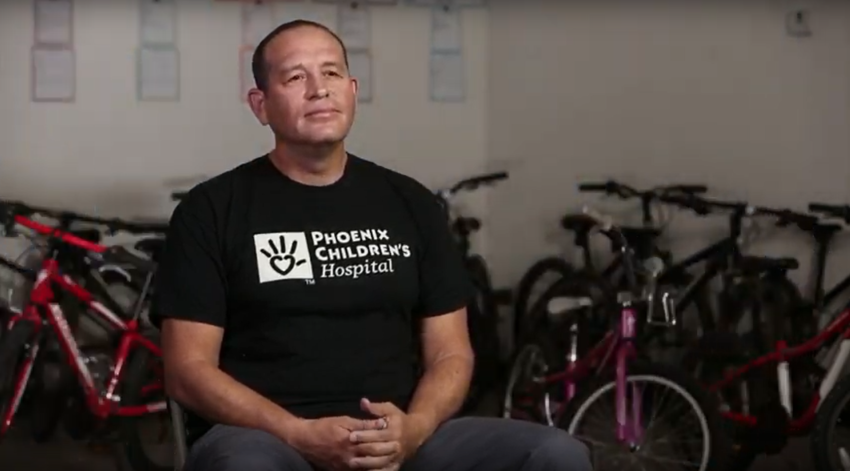
Share On Social!
Juan Tarango of Tempe, Arizona, has been an avid cyclist for over 30 years. For him, it’s about exploring, exploring his city, state, country and even other countries.
He loves to see kids ride bicycles, having fun and getting physical activity.
But he hated seeing how many kids show up with bike-related injuries at the Phoenix Children’s Hospital ER where he worked.
“One kid─wasn’t going fast, wasn’t doing tricks─falls, hits his head, and ends up with life-changing brain injury,” Tarango said.
Tarango wanted to help.
He wondered: What could he do to teach Latino and all kids bicycle safety behaviors, and thus reduce bike-related injuries?
Children, Bicycling, and Injuries
Bicycling is good for your health.
For kids, it can help develop muscle stamina, provide physical activity, boost emotional and mental health by reducing stress, and foster community connections.
But…bicycling also is the top sports-related injury that takes more kids to the Phoenix Children’s Hospital ER in Phoenix (42.5% Latino), according to Tarango.
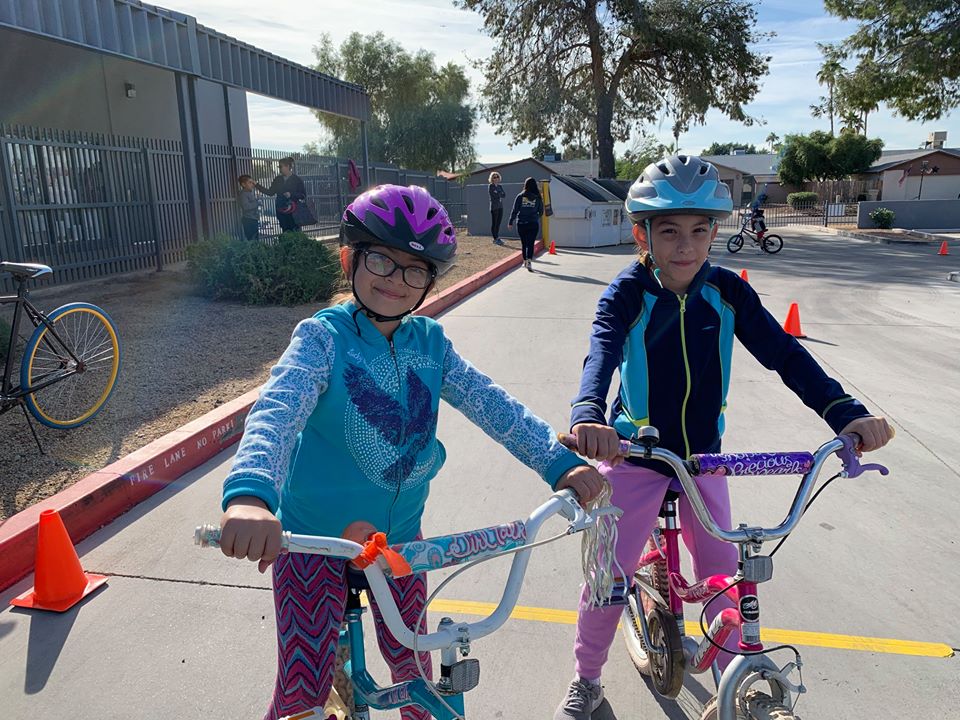
Nationally, bicycling is one of the top-five causes of sport and recreational injuries to children, according to a 2014 study. Bicycling was top cause of these injuries among children ages 8-11, second-biggest cause among those ages 1-7, and third-biggest cause among those ages 12-15.
In 2017, 60 children younger than 14 were killed in preventable bicycle deaths, and 50,825 were injured, according to the National Safety Council.
Tarango, during his time as the injury prevention coordinator at Phoenix Children’s Hospital, would see as many as five children admitted to the ER for bike injuries each week.
Why Are So Many Children Injured While Bicycling?
Tarango lists three main reasons for these injuries:
- lack of helmets;
- poor maintenance on bike, like faulty brakes or loose handlebars; and
- motor vehicle crashes.
Most who suffer traumatic brain injuries were not doing anything “wild and crazy,” Tarango said. They just weren’t wearing helmets.
To Tarango, biking is more than a hobby, it is a lifestyle. He is passionate about sharing that lifestyle.
“It’s a healthy sport that’s good for the environment and helps them explore and learn more about their world and environment,” Tarango said.
Tarango would visit every family in the ER to give them a bike helmet and discuss safety. Arizona does not have a bicycle helmet law for children.
He would also do brief lectures and presentations at schools.
But he knew this wasn’t enough. He wanted to do more.
Tarango’s Big Idea: Hands-On Bike Safety, Maintenance for Kids
Tarango looked online for more comprehensive bike safety programs. But most programs he found were only 20 minutes and only instruction.
Tarango knew that children needed repetitive instruction and hands-on practice.
Moreover, many bike programs didn’t teach bike maintenance.
“I saw a lot of kids would be injured because their bikes weren’t properly maintained,” Tarango said. “Brakes didn’t work or handle bars weren’t tightened.”
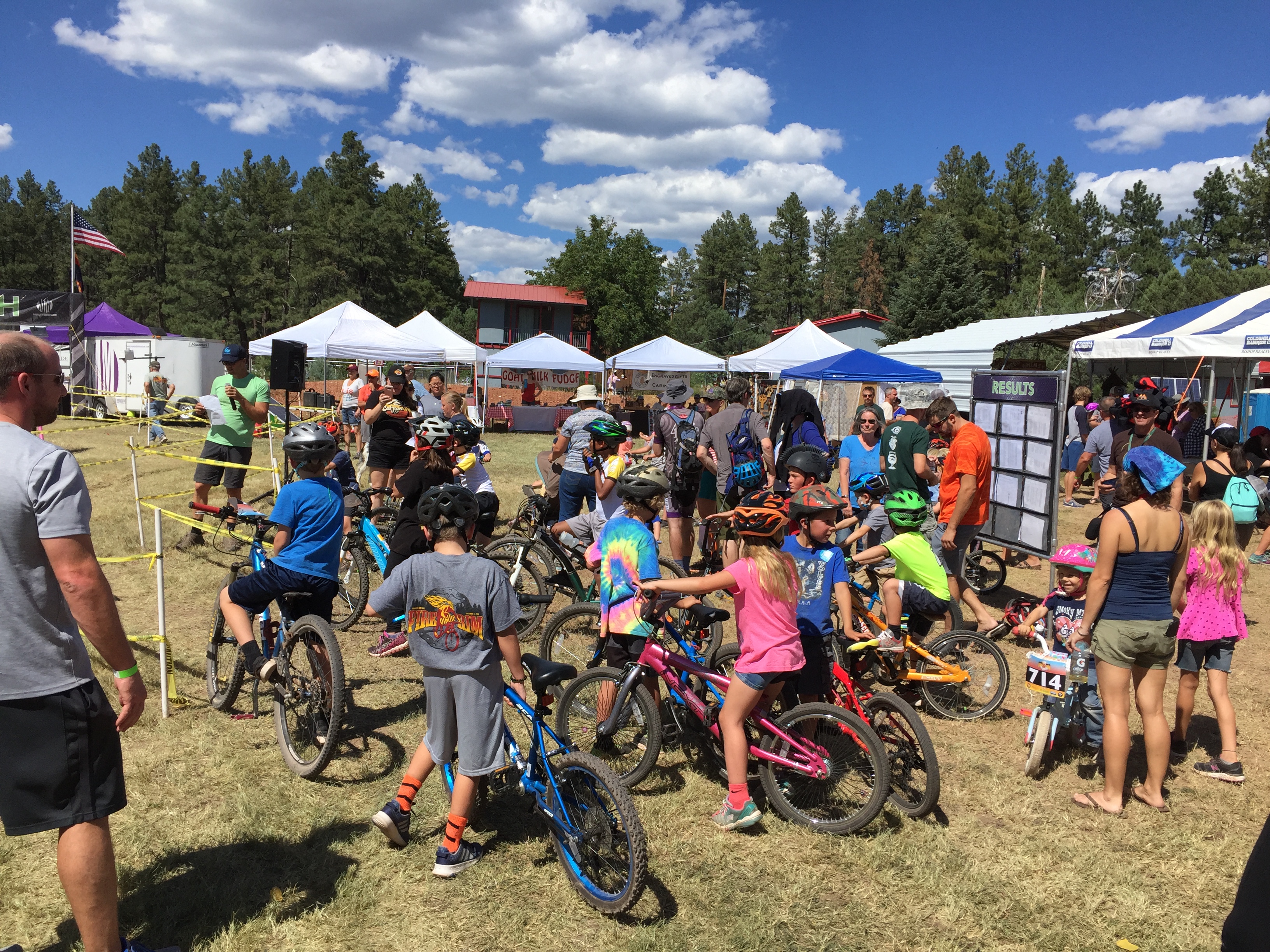
He wanted to develop a comprehensive bike, bike maintenance, and bike safety curriculum with time for instruction and hands-on experience.
With his involvement in injury prevention, his education in nursing, and his experience as a cyclist and cyclist mechanic, he knew he could do that.
The Birth of a New Bike Safety Course
In 2014, Tarango created a six-week bike safety curriculum for fourth graders.
Tarango was in nursing school at the time and had taken multiple course in child development.
“We chose fourth graders because at that age they can judge speed and distance” Tarango said.
The curriculum was designed for 30-minute classroom instruction and one-hour hands-on bicycle time. He developed PowerPoint presentations and handouts for six lessons:
- Helmets and bike basics
- Bike maintenance
- Traffic safety
- Reinforce Lesson 1 and add new skills
- Reinforce Lesson 2 and add new skills
- Reinforce Lesson 3 and add new skills
“The curriculum was tailored to the injuries I was seeing [in the ER],” Tarango said.
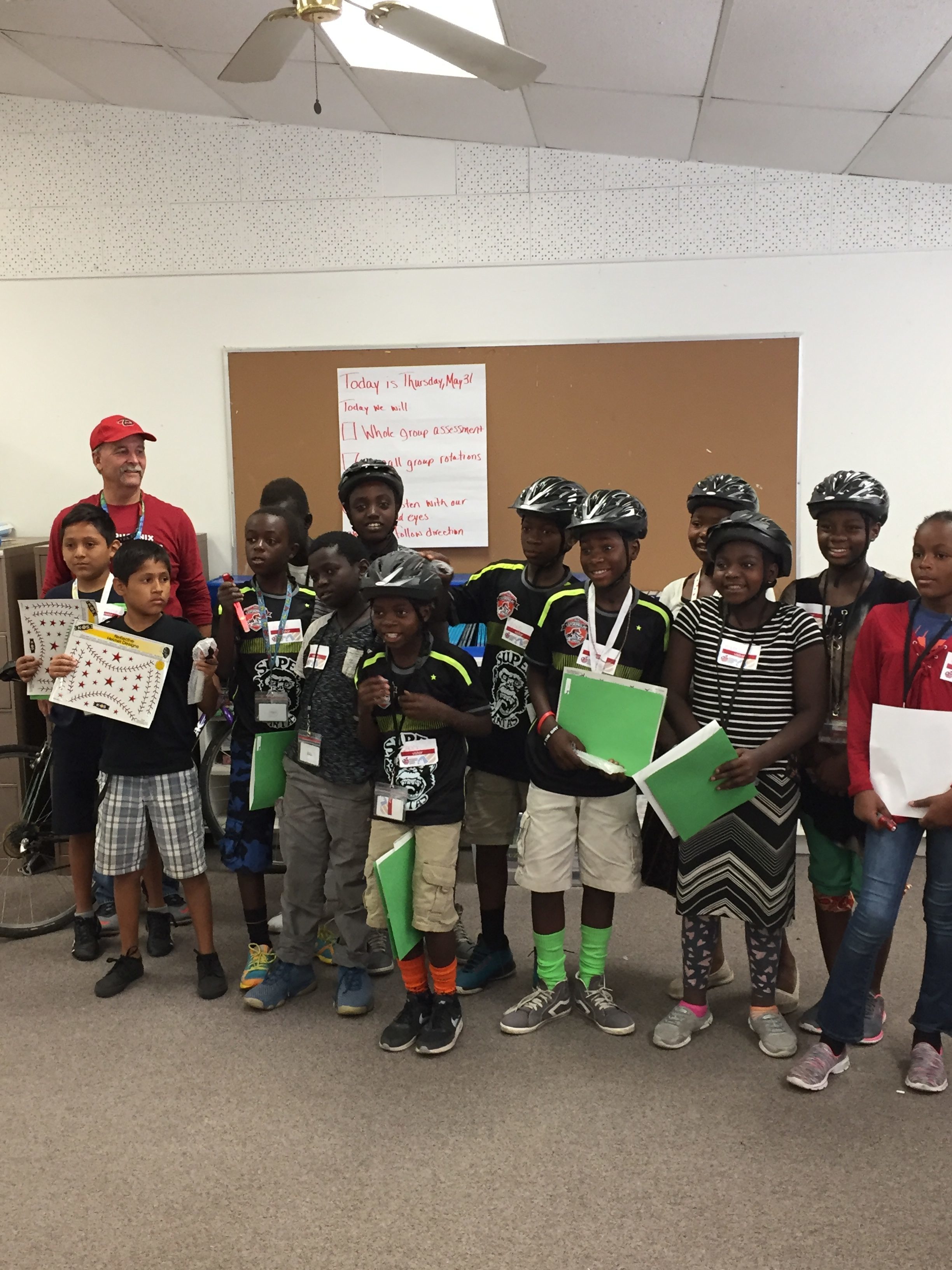
However, he would need helmets and bikes.
Tarango applied for and received a grant through the Governor’s Office of Highway Safety for helmets.
Then, he reached out to a fellow cyclist, Brandee Lepak, who worked with Trips for Kids.
Lepak agreed to loan Tarango 30 bikes for the six-week program.
Now, all he needed were the kids.
Bringing Bike Safety to Schools
The Phoenix Children’s Hospital had a longstanding partnership with the Creighton School District in Phoenix, which has a majority Latino student population.
Tarango met with the principal and the three fourth-grade teachers at Loma Linda Elementary Sachool and explained his six-week bike safety program.
They agreed immediately.
Tarango recruited coworkers, like Susan Bookspan, and fellow cyclists to volunteer to help teach the six-week program.
They did instruction in the classroom and for the first four weeks. They set up a bike course on the playground with cones to simulate left turns and right turns, stopping and starting.
The final two weeks, the children were able to bike in the neighborhood around their community.
“From the first day, I saw vast improvement in how they handled the bike and safety behaviors, and they really took to heart the use of helmets,” Tarango said. “When we took them out to explore around the school, some were amazed at what they discovered in their own neighborhoods.”
Over two years, they brought the bike safety program to nine fourth grade classrooms at three different campuses, reaching over 225 fourth graders.
At one campus, the Phoenix Fire Department even volunteered.
“Biking opens the door to discover your neighborhood and your city,” Tarango said.
Sustaining Bike Safety
Tarango graduated from nursing school and took a job as an emergency nurse.
John Boyd was later hired to replace him as the injury prevention coordinator at Phoenix Children’s Hospital.
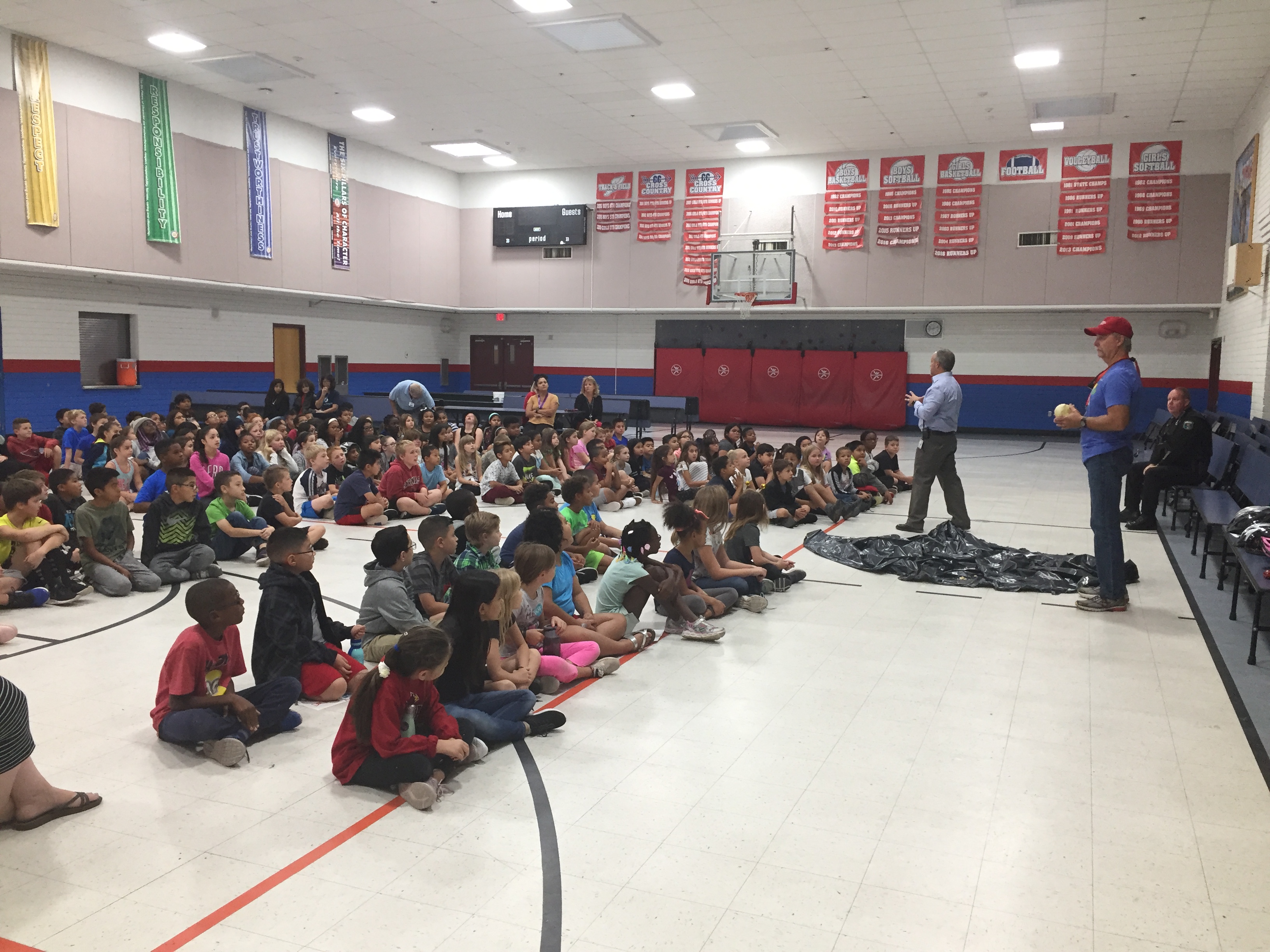
Boyd retired from the Phoenix Police Department 17 years prior, where he was the bike ped safety coordinator with the Safe Kids coalition in Maricopa County.
He knows that Phoenix is one of the most dangerous cities in the nation for pedestrians.
“We are spread out and people are walking and biking more as more people move here,” Boyd said. “My main concern is kids.”
When he joined the Phoenix Children’s Hospital he was really impressed with the work Tarango and Bookspan had been doing.
In fact, he had partnered with Bookspan 20 years previously on bike safety programs.
Although the six-week program Tarango created hasn’t been relaunched since Tarango’s departure, Boyd does presentations at schools and events. He also trains emergency department staff to help children and families properly fit helmets.
In 2018, Boyd participated in 42 events to raise awareness about bike safety. In that time he reached over 2,700 students and delivered over 1,400 helmets.
He is currently working with Union Pacific and others to plan a city-wide walk and bike to school event.
“Even if it’s hot, people are out riding and walking because there is so much to do here” Boyd said. “I want to encourage kids to get out, and I want them to be safe.”
By The Numbers
142
Percent
Expected rise in Latino cancer cases in coming years
This success story was produced by Salud America! with support from the Robert Wood Johnson Foundation.
The stories are intended for educational and informative purposes. References to specific policymakers, individuals, schools, policies, or companies have been included solely to advance these purposes and do not constitute an endorsement, sponsorship, or recommendation. Stories are based on and told by real community members and are the opinions and views of the individuals whose stories are told. Organization and activities described were not supported by Salud America! or the Robert Wood Johnson Foundation and do not necessarily represent the views of Salud America! or the Robert Wood Johnson Foundation.



